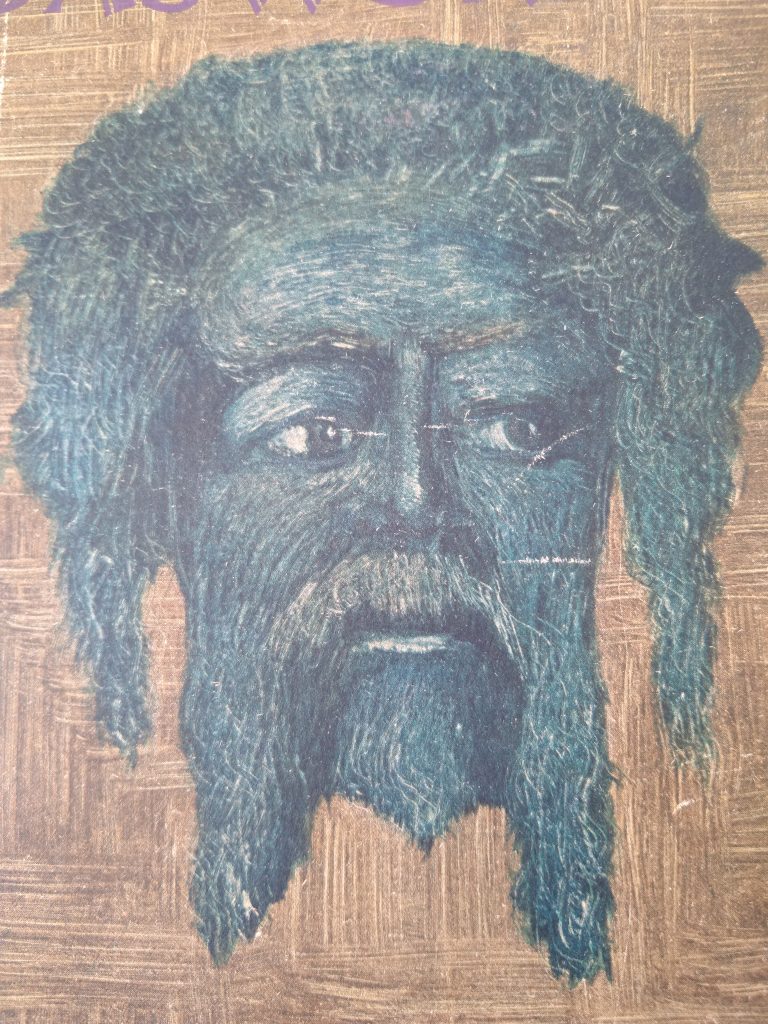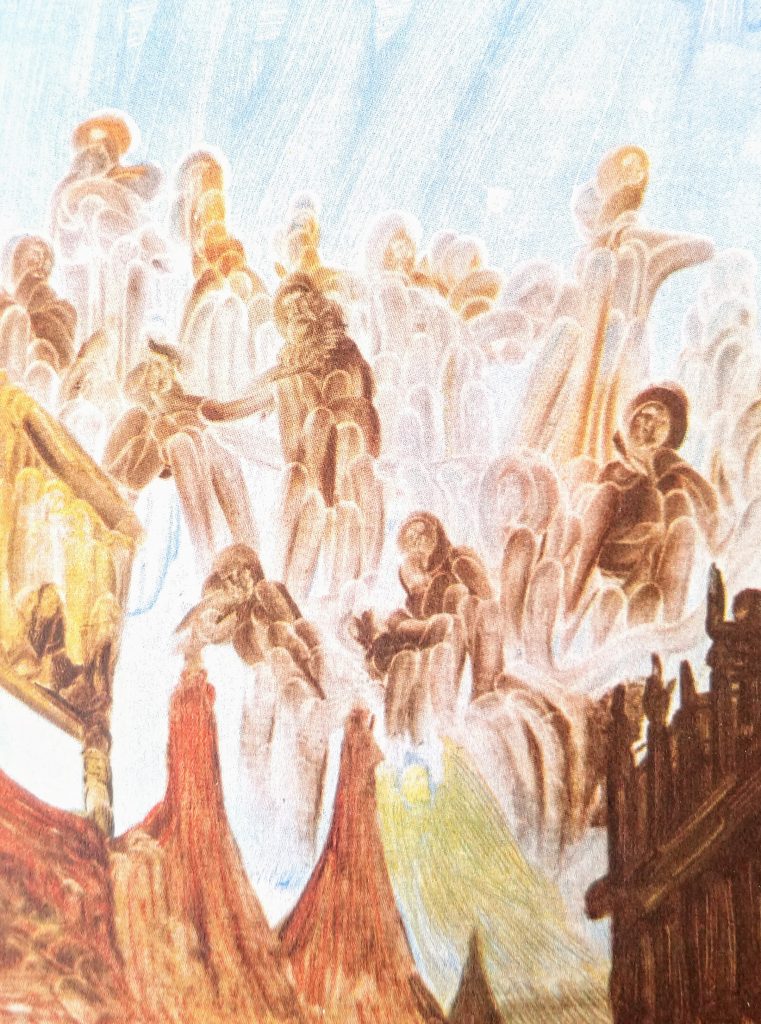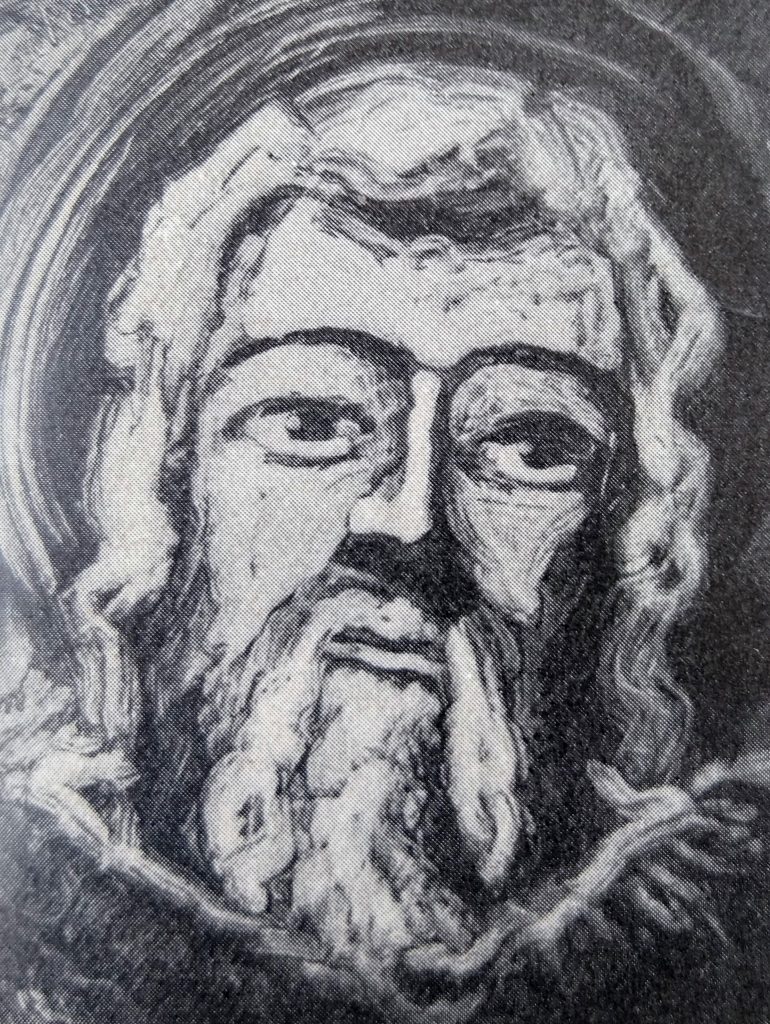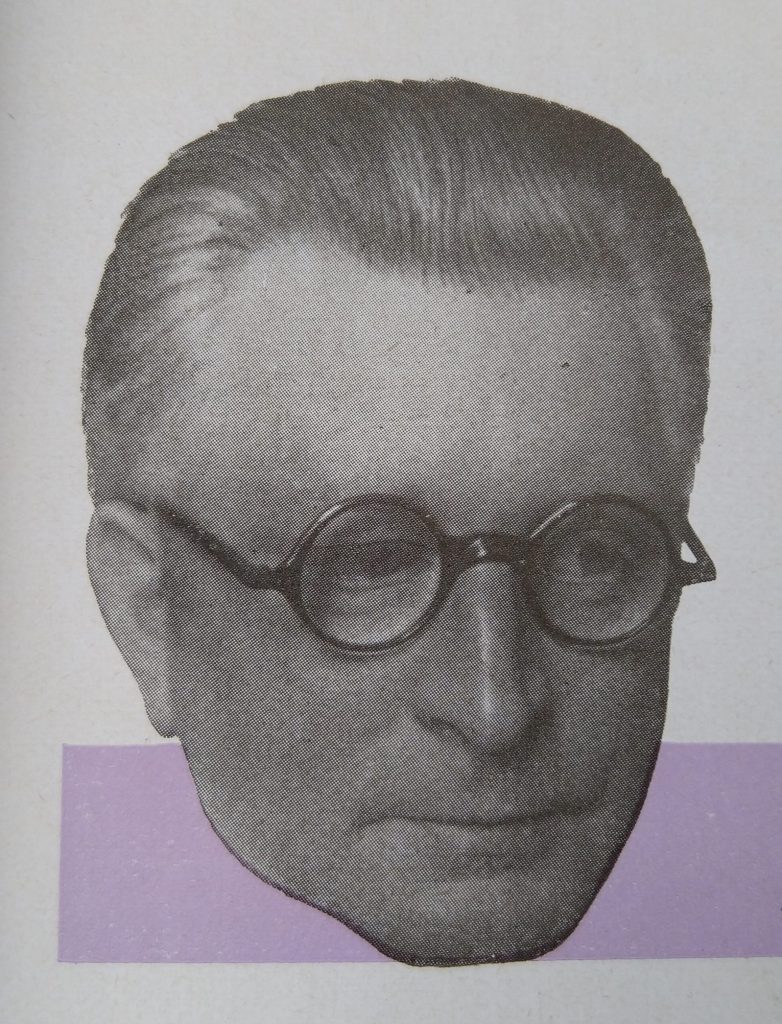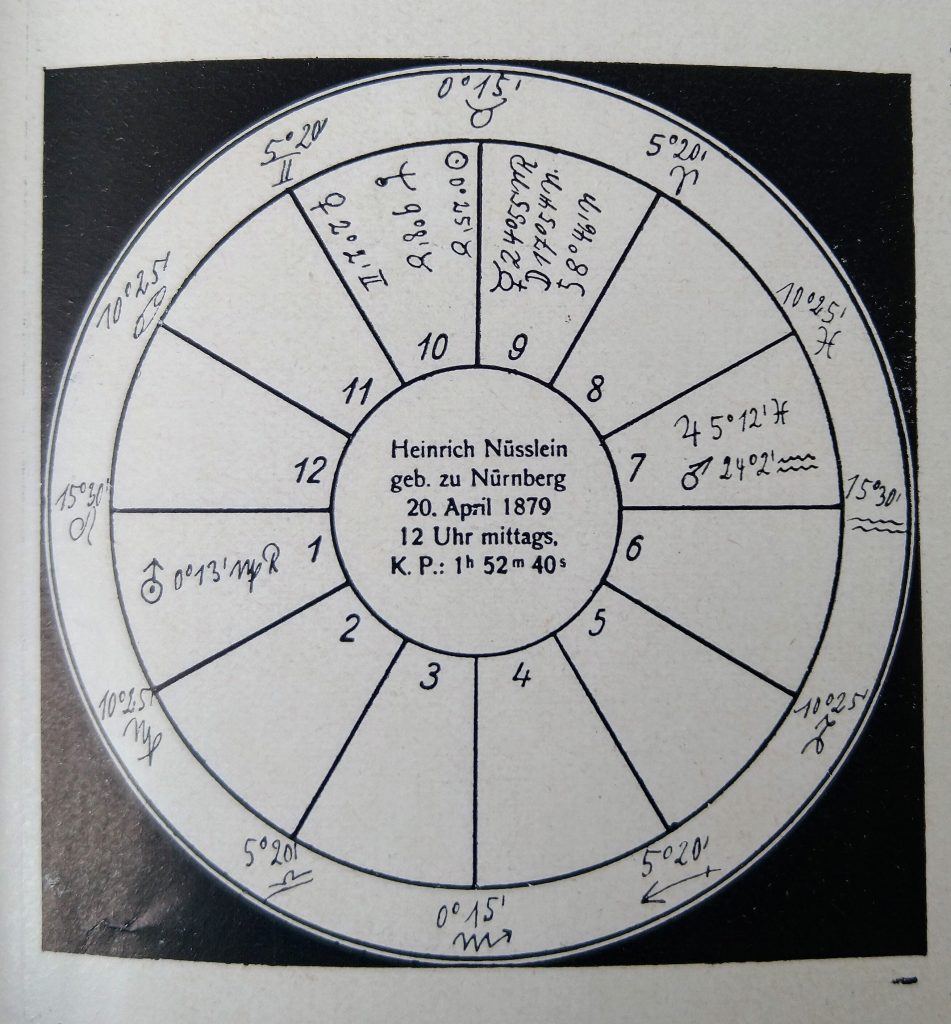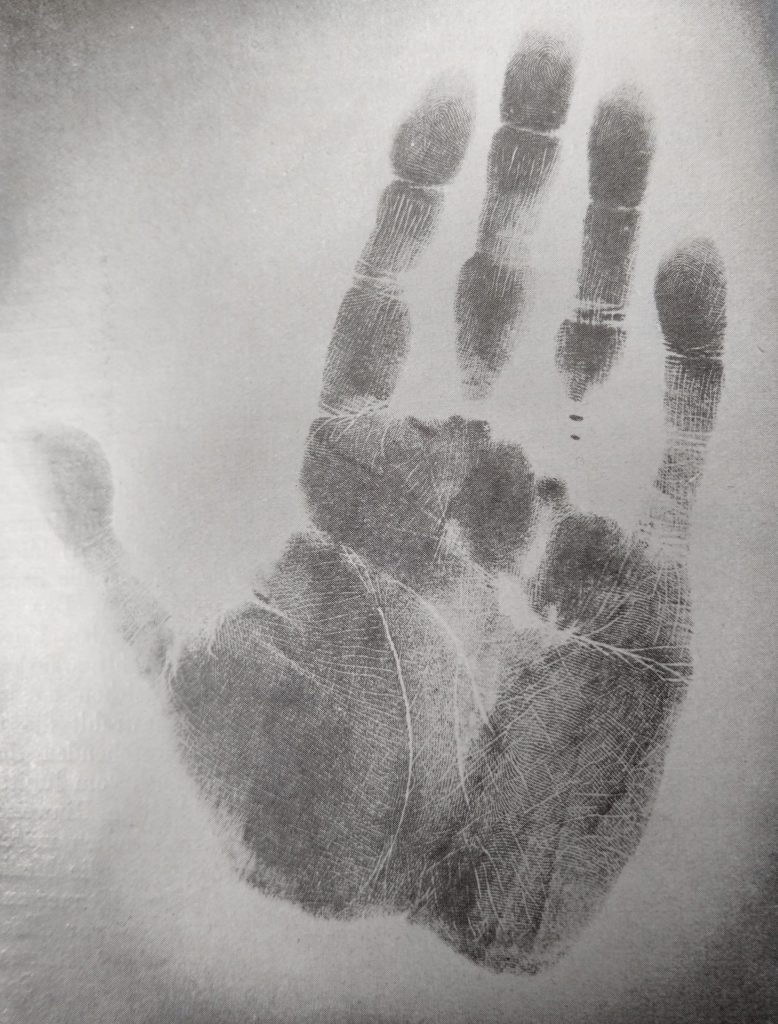“It is not every medium who is able to get into the headlines of the British Press without being ridiculed, but this feat has been achieved by Herr Heinrich Nüsslein” – Arthur Conan Doyle 1928
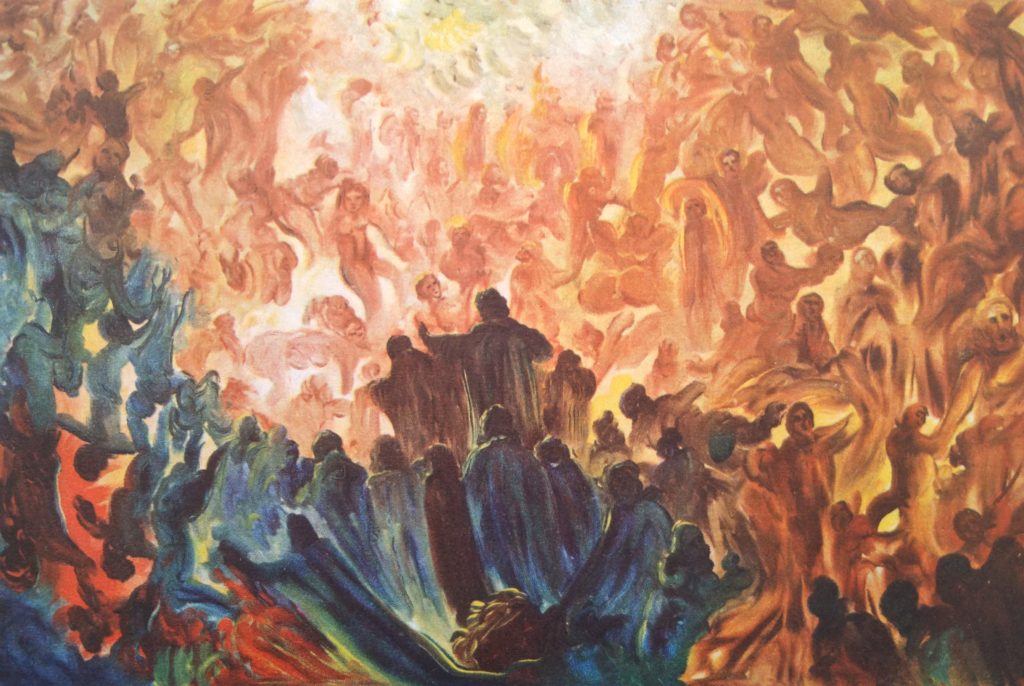
Heinrich Nüsslein (1879-1947) was a celebrated visionary artist from Nuremberg, Germany. His output was prolific, amounting to several thousand pictures, until the Nazis deemed his work degenerate resulting in huge amounts being destroyed.
Nüsslein’s only art training was from a short attendance at the Nuremberg School of Art. He then worked for an art publisher for 15 years and later dealt in old masters. In 1924 he was encouraged to develop psychic powers by a friend and discovered a talent, whilst in his mid 50s, for automatic writing which quickly developed into painting. Within two years had painted 2000 pictures and was invited to exhibit at home and abroad. In the 1920s Nüsslein was probably the most well known spirit artist in Europe. In London he held solo shows at the Chester Gallery in 1927 and at the Alpine Gallery in 1928. Prices of the 250 artworks ranged from 15 to 60 guineas and prominent visitors from the psychic world included Harry Price, Arthur Conan Doyle, President of the Society of Psychical Research and Dr Eugene Osty, the champion of mediumistic artists Augustin Lesage and Marjan Gruzewski.
The limitations of his poor eyesight, one ninth of normal vision, did not hinder his clairvoyant skills, He worked rapidly and effortlessly in varying degrees of consciousness and darkness. Small pictures took 3 or 4 minutes and around 30 minutes for larger works. He also painted scenes impressed upon him psychically by feeling ‘en rapport’ with a sitter who could be in the same room or a long distance away. Another aspect of his work was as a visionary who could project himself into distant lands or epochs of the past and paints what he ‘sees’ there, often in complete darkness. Paints and brushes are placed in handy positions, but often it is his fingers that are used to the greatest effect which was described by the British psychical investigator, Harry Price: “Finger strokes are distinctly visible in many of his subjects and he has an uncanny gift for producing the impression of crowds of people or spirits, and processions with very few strokes.”
An article written in the Occult Review by Ivan Baker about Nüsslein for the event of his London 1927 exhibition included the following insights into his art: “He claims that he paints from occult memory, clairvoyant vision, and magnetic contact with the living and the dead. Herr Nüsslein is pleased to discuss his occult work, and to furnish such information concerning it as he is able, especially in regard to his painting, which is invariably carried out in a state of semi-trance. He advances no theory of occult painting, but favours the hypothesis that the occult artist achieves by some psychic process of the trance state, the dissociation of the abstract counterpart from the objective reality. Thus, in moments of intensified vision, he is able to perceive natural forms and events as mere accentuations of Time and Space Rhythm is the resultant phenomenon of the balanced recurrence of certain of these accentuations. It is known only through its effects, the chief of these being the rousing of aesthetic emotion. Thus, the consciousness of the inspired artist is freed from the shackles of Time, and traverses boundless Space. It is imbued with the nascent energy of cosmic rhythm, which the creative faculty transforms, directs and makes static, thus rendering it manifest to less sensitive vision. In the absence, or during the suspension, of suitable executive ability, such accumulated energy may find expression in hallucinations or visions perceived in the mind’s eye.”
Baker also adds: “A counter view is here worthy of note. It is maintained that images beheld in the mind’s eye may originate in entoptic glimmerings furnished by retinal corpuscles which by the aid of the imagination are elaborated into mental pictures. Herr Nüsslein devotes much attention to the investigation of occult phenomena, and has obtained extraordinary results in automatic writing, table tilting and other applications of occult force Perhaps his most remarkable achievement in certain of his pictures cannot fail to arouse widespread interest. One is conscious, in their presence, of an uncanny nearness to the fundamental core of all things. It is as though the veil had been torn from Nature’s profoundest mystery The whirling impetus of planets in motion, the gravitational pull that holds the stars in place, something strangely akin to these mighty forces, animates his compositions. His singular powers of vision and abstraction afford him experience of a unique order, and he has succeeded in communicating not a little of the emotion engendered by it. Judged by these criteria rather than by conventional standards, his paintings, despite certain immaturities of technique, reveal much of the permanent quality of spiritual greatness.”
Images above show the planetary birth chart and palmistry print of Heinrich Nüsslein from 1928 as published in the German occult periodical Das Wunder.
Artworks by Heinrich Nüsslein can be found in the collections of The College of Psychic Studies and the Gallery of Everything.
